Searching for GRB optical counterparts with GOTO
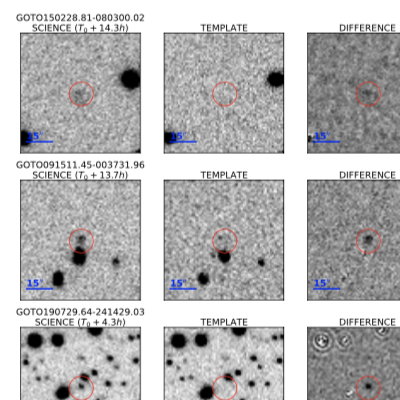 Our GOTO prototype, while optimised
for gravitational-wave followups, is also well suited to detecting optical
counterparts of gamma-ray bursts detected by
Fermi. Monash PhD candidate
Yik Lun (Travis) Mong recently completed his analysis of our followup of 93
such events, focusing on 53 with favourable observational conditions.
Unfortunately we couldn't confirm any counterparts (although he did find some
intriguing candidates!)
Our GOTO prototype, while optimised
for gravitational-wave followups, is also well suited to detecting optical
counterparts of gamma-ray bursts detected by
Fermi. Monash PhD candidate
Yik Lun (Travis) Mong recently completed his analysis of our followup of 93
such events, focusing on 53 with favourable observational conditions.
Unfortunately we couldn't confirm any counterparts (although he did find some
intriguing candidates!)
Perhaps more importantly, Travis' analysis offers some lessons for future followup campaigns to help improve our chances of success. Travis' paper, in collaboration with the GOTO team, has been accepted by MNRAS
Read the paper (arXiv:2108.11802)
Labels: 2021, /postgrads


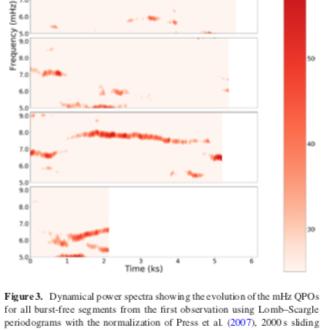 Millihertz quasi-periodic oscillations (mHz QPOs) observed in neutron-star
low-mass X-ray binaries are generally thought to arise from
"marginally stable" thermonuclear burning, at the upper limit of
accretion rates where
Millihertz quasi-periodic oscillations (mHz QPOs) observed in neutron-star
low-mass X-ray binaries are generally thought to arise from
"marginally stable" thermonuclear burning, at the upper limit of
accretion rates where
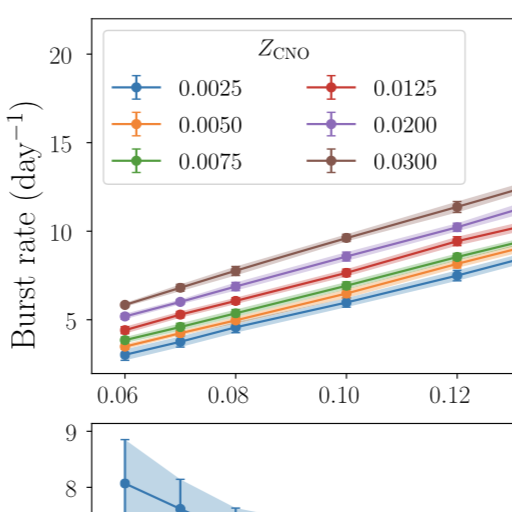 The "Clocked burster", GS 1826—238 is one of the best studied burst
sources, due to it's (
The "Clocked burster", GS 1826—238 is one of the best studied burst
sources, due to it's (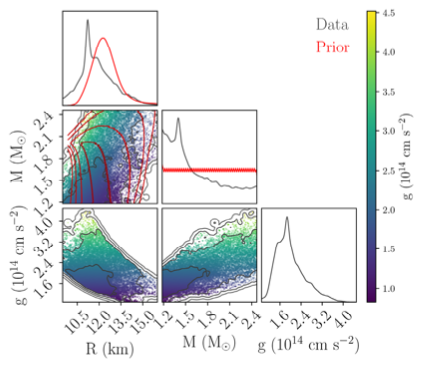 The first accretion-powered millisecond pulsar ever found,
SAX 1808.4—3658 is a remarkable object, also showing thermonuclear
bursts during it's infrequent outbursts. Over several years PhD student
The first accretion-powered millisecond pulsar ever found,
SAX 1808.4—3658 is a remarkable object, also showing thermonuclear
bursts during it's infrequent outbursts. Over several years PhD student 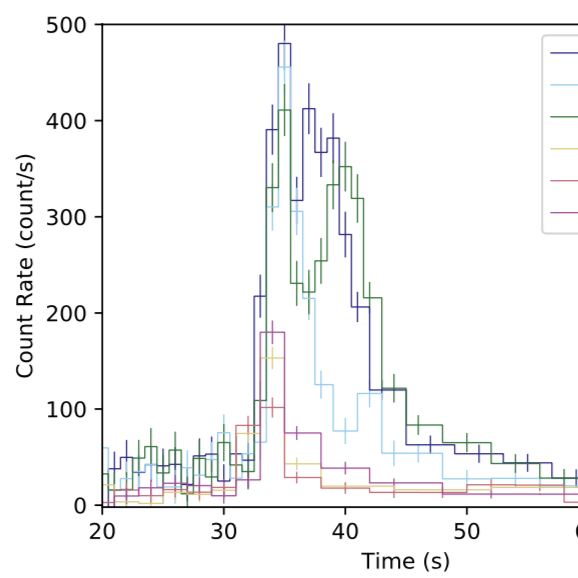 While examining RXTE data for the
While examining RXTE data for the
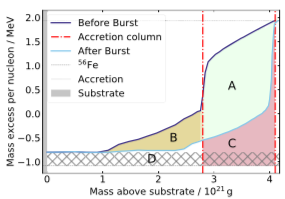 PhD student
PhD student  I am proud and pleased to report
the award of
I am proud and pleased to report
the award of
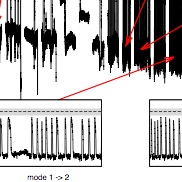 The Rapid Burster is a neutron-star binary that exhibits singular behaviour;
extremely frequent "type-II" X-ray bursts, which cannot be thermonuclear in
origin. The standard explanation of these bursts is that they arise from
episodic accretion onto the neutron star, and it is this accretion which also
fuels the (mostly) independent thermonuclear (type-I) bursts. The
The Rapid Burster is a neutron-star binary that exhibits singular behaviour;
extremely frequent "type-II" X-ray bursts, which cannot be thermonuclear in
origin. The standard explanation of these bursts is that they arise from
episodic accretion onto the neutron star, and it is this accretion which also
fuels the (mostly) independent thermonuclear (type-I) bursts. The


